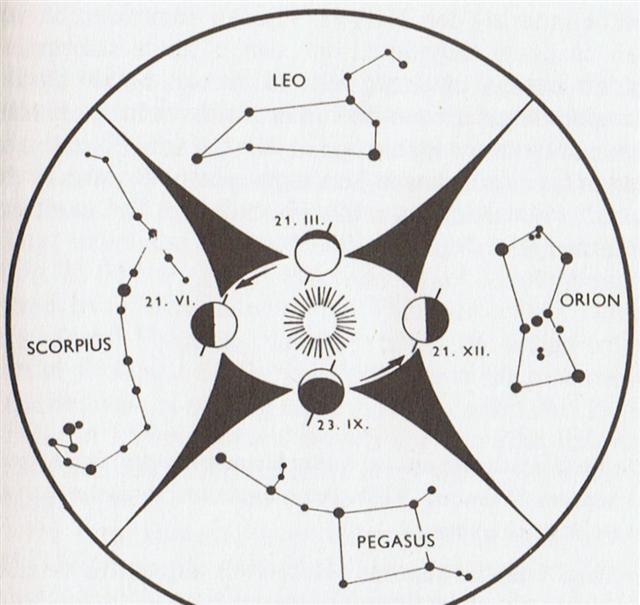In the northern spring Leo cannot be seen in the night sky, because the Sun is there. Instead Pegasus at the opposite side of the sky is visible:
Turning back the precessional sun wheel a quarter of a cycle, to a time around 26000 / 4 = 6500 years ago, the Sun would, like today, have visited Orion before reaching Leo and visited Scorpius before reaching Pegasus (cfr the time arrows in the picture above). The dates in the picture must, however, be reduced by 3 months, because the stars are advancing in the solar year due to the precession:
Around 4500 B.C. Leo would have been visible in the midwinter nights, e.g. at the December solstice (21.XII), while Pegasus would have been in the nights of high summer. Leo could be observed in the winter nights when the Sun was feeble. But at midsummer, when the Sun was very intense and strong like a lion, he was Leo. At that time of the year a Full Moon would have been at the opposite side of the sky in Pegasus. The Sun Lion ruled in high summer and the watery Pegasus Square was where the sky was low. I.e. back in the Golden Age the night sky always illustrated where the Sun was not. When Leo was close to the Full Moon in the night it was certain the Sun was at Pegasus. For those who bothered to look at the stars in the night and reflect a little it was all very obvious:
When in the northern spring the Sun was at Orion, then the Full Moon was in Scorpius at the other side of the sky. When in the southern spring the Sun was at Scorpius, then the Full Moon was in Orion. | |||||||||||||||||||||||||||||||||||||
